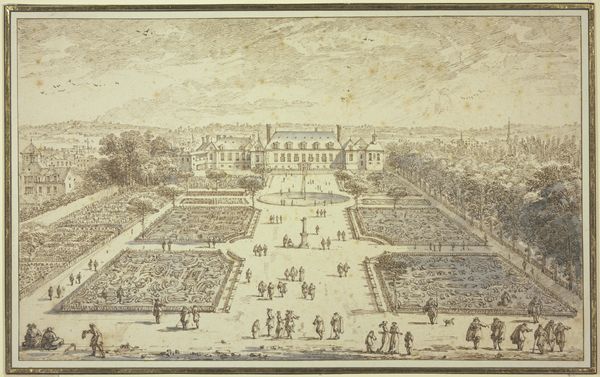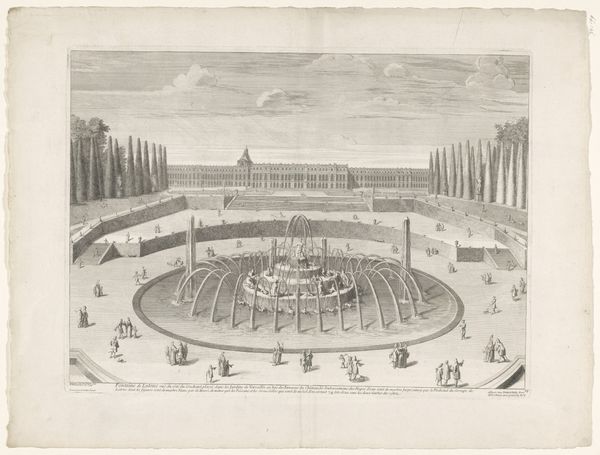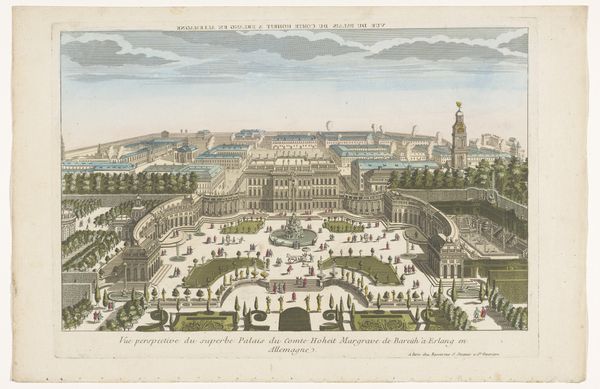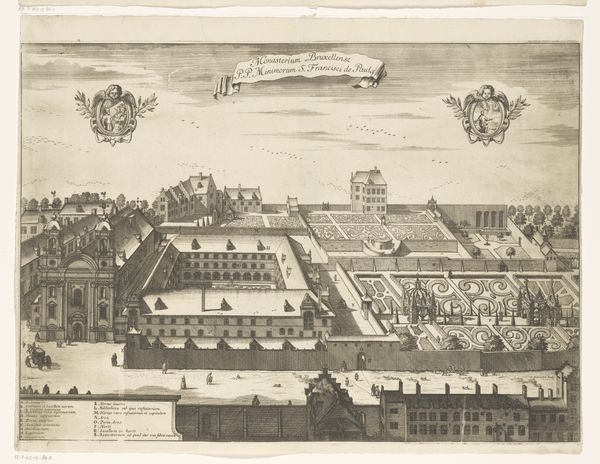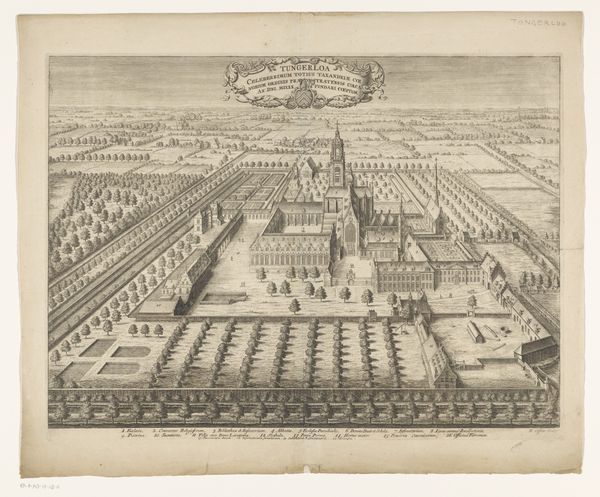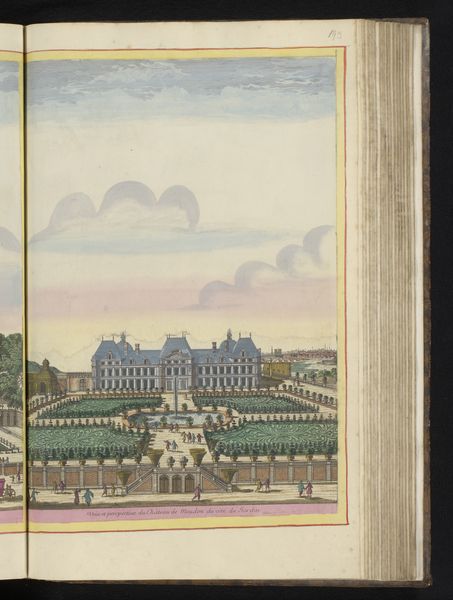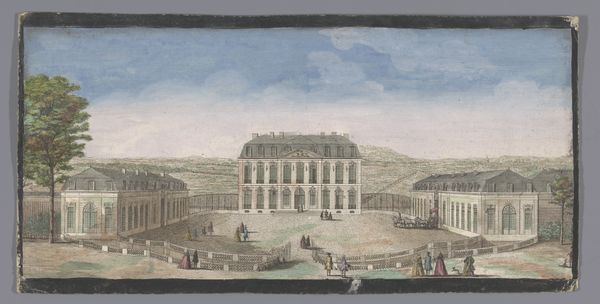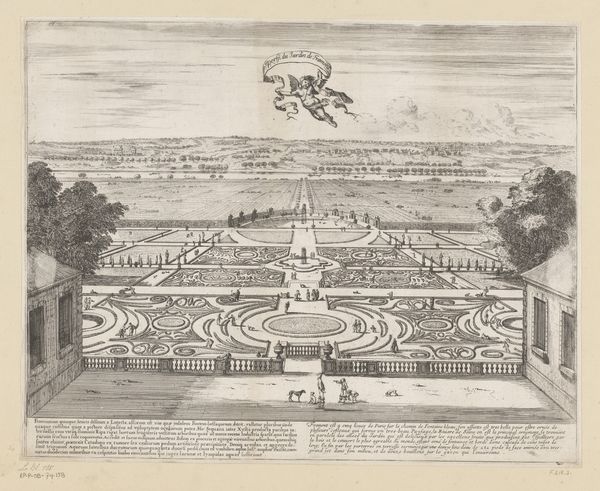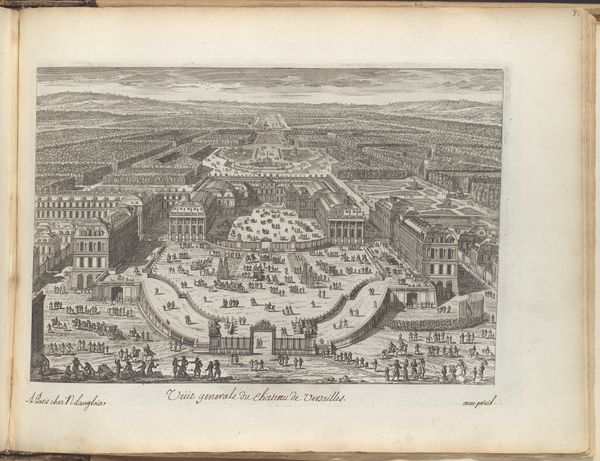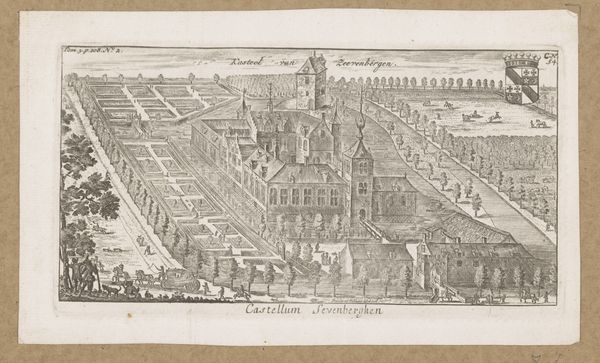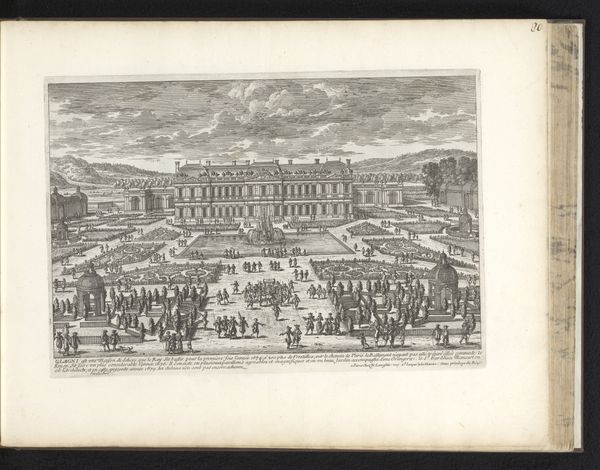
drawing, coloured-pencil, painting, paper, watercolor
#
drawing
#
coloured-pencil
#
baroque
#
painting
#
landscape
#
perspective
#
paper
#
watercolor
#
coloured pencil
#
cityscape
#
academic-art
Dimensions: height 293 mm, width 447 mm
Copyright: Rijks Museum: Open Domain
Curator: This detailed rendering shows the Palace of the Margrave of Bayreuth in Erlangen. It's an 18th-century piece, created with colored pencil and watercolor on paper. The artist, known only as Basset, perfectly captures the Baroque style of the complex and gardens. Editor: The first thing that strikes me is the meticulous order, almost to the point of being dreamlike. All those tiny figures in the gardens… Do you get a sense of the life and purpose they imbue? Curator: Absolutely. The piece reveals a desire to project an image of power and refinement, a trend amongst European rulers during the era of absolutism. Landscape architecture here symbolizes control and imposes order onto the natural world, and therefore its beholders. The immaculate cityspace echoes academic principles prevalent in its day, where institutions defined cultural practices. Editor: I'm curious about that rooftop statue. To me, it looks like a form of winged victory, perhaps? Curator: You're spot on! Winged figures often signify triumph and glory, both popular aspirations and declarations among nobility. Such features were strategically positioned to reinforce authority, communicating divine favour to any observer in the vicinity. The palace as microcosm… Editor: And it’s about aspiration, not necessarily fact, wouldn’t you agree? It reflects less a depiction of tangible reality, and more of what power aspires to communicate through imagery and spatial arrangement. What’s fascinating to me is that despite all this manufactured power, there's an unmistakable fragility to the image itself… these delicate washes of color, those minute, painstakingly drawn figures... It’s like a clockwork kingdom, poised, precious and possibly prone to some grand malfunction. Curator: A fragility intrinsic to Baroque sensibility, you mean? I find that tension extremely pertinent within these displays of authority. Even with their monumental grandeur, the anxieties and contradictions of the period are inevitably brought to light. Editor: Indeed. After reflecting on this, I leave with a richer perception not just of historical authority, but how power translates symbolism and spatial order into psychological experience. Curator: Agreed. Considering that those displays still echo to this day! A pertinent reminder to keep considering these public roles through artistic lens.
Comments
No comments
Be the first to comment and join the conversation on the ultimate creative platform.

